
As a car owner, it is necessary to service your car regularly. However, just as you’d like to keep your car running smoothly, you should also care about its paint job. Maintaining the paint job on your vehicle in good condition will help it avoid corrosion, help you catch scratches and dents, and increase the car’s total worth.
There are two ways to keep your vehicle shiny: use car wax or polish. However, many people are unaware of the difference between the two and lack basic car waxing and polishing skills. The market is filled with a variety of car polish and wax choices, each offering a unique set of advantages. If you want to keep your car looking good, you first need to know the difference between the two.
Car Polish vs. Wax: A Detailed Comparison
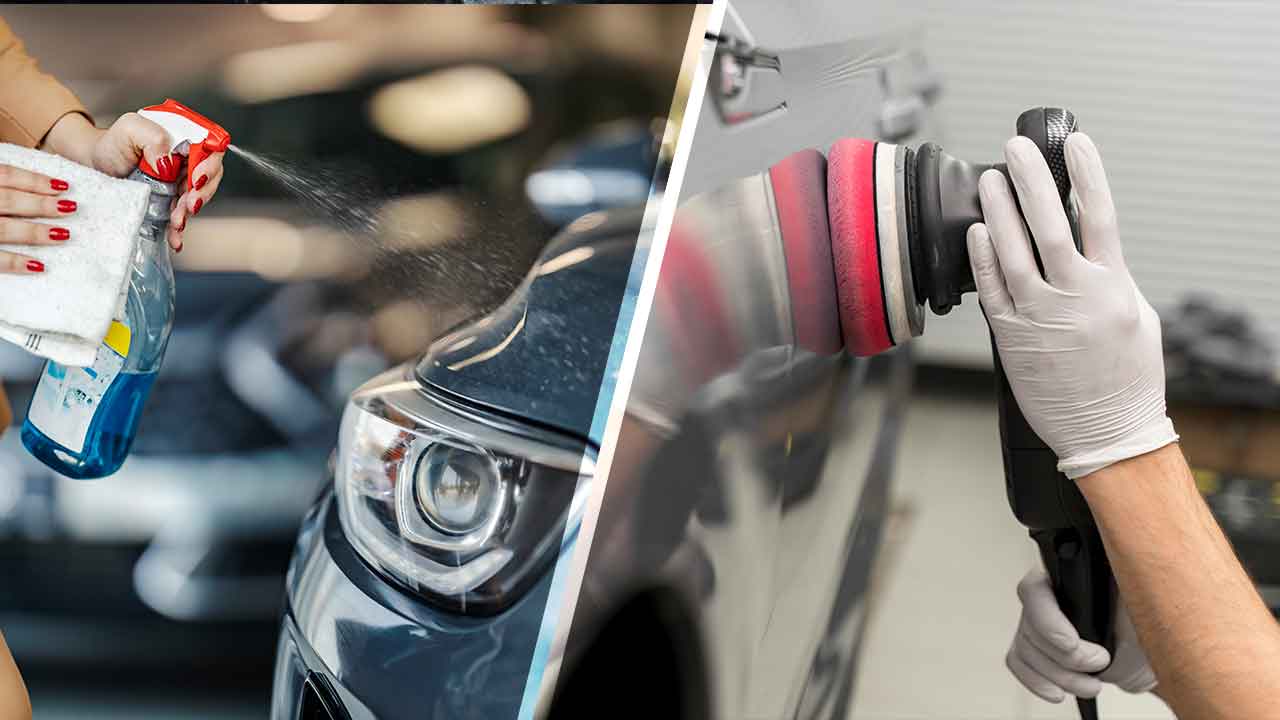
A car’s paint finish will get dents, scratches, and oxidation-related dullness with time. To repair this, use vehicle polish, which is a minimally abrasive substance. It works by sanding off any defects and an extremely thin layer of paint.
As the polish is carefully massaged across the car’s paint, it removes defects and smoothes the surface, restoring its original sparkle. In contrast, car wax fills up surface scratches in your paint and enhances its overall appearance.
| Parameters | Car Wax | Car Polish |
| Function | Serves as a barrier between the paint surface and the weather, protecting the paint-work. | Enhances the look by removing cosmetic defects |
| Composition | Consists of natural or synthetic ingredients, giving it a hydrophobic effect | Consist of micro-abrasive particles or aluminum oxide for polishing |
| Finish | Gives a shiny, glossy look | Restores its natural color and sheen, making it more vibrant and glossy |
| Duration | Offers long-lasting protection over several months. | Should be used gently to avoid harming the paint job. |
| Application | Easy to use, ideal for DIY maintenance. | Requires careful application because of its polishing nature. |
| Types | Available in natural carnauba, synthetic, and ceramic coating wax | Classified into cutting, polishing, and finishing types |
Understanding the Purpose of Wax and Polish
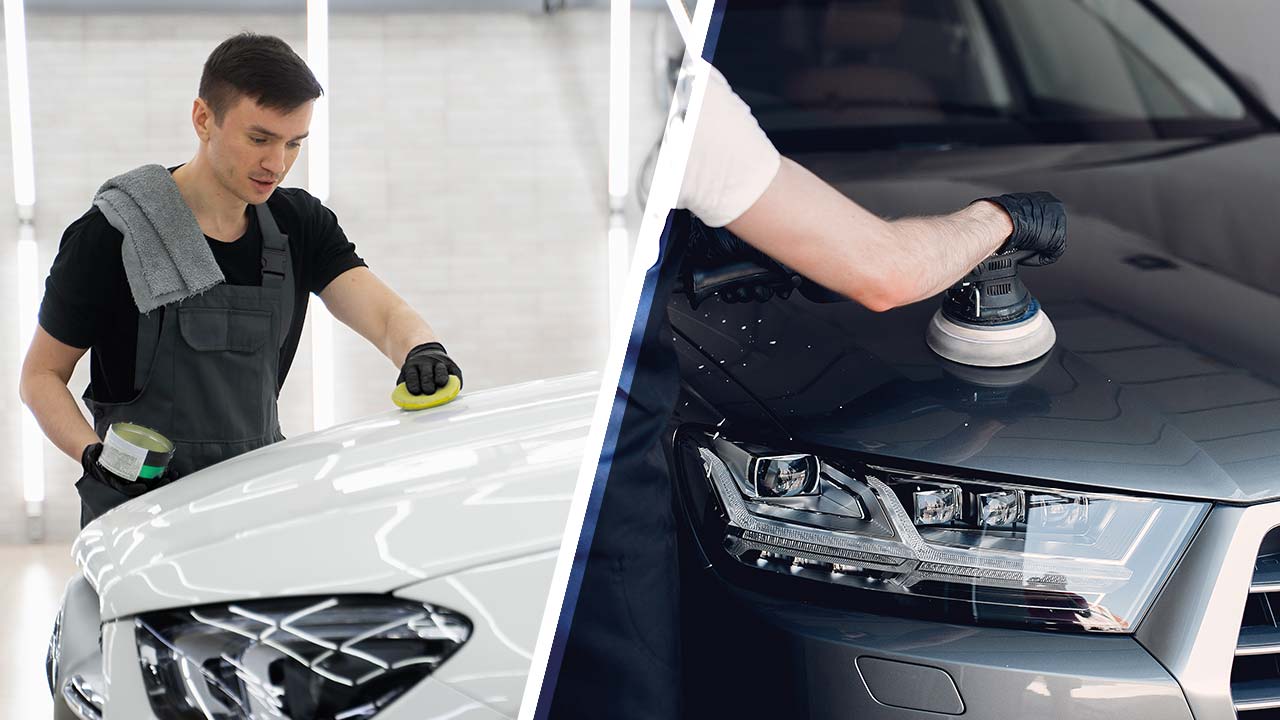
Car wax and polish are two of the most important things for keeping your car looking beautiful. Despite their apparent similarities, their functions are different. Car wax is used to preserve your car’s paint finish. It produces a hydrophobic effect that deters water and keeps water stains from forming.
On the other side, car polish makes your car’s paint look more shiny and brighter by restoring its natural color and luster. It can be used before applying the car wax to remove defects from the paint surface, giving it a smoother and shinier finish.
When combined, they can help maintain the aesthetics of your car for many years. It is crucial to remember that applying car wax and polish excessively can harm the paint job on your car, so make sure you carefully follow the manufacturer’s directions and use them wisely.
Types of Car Wax
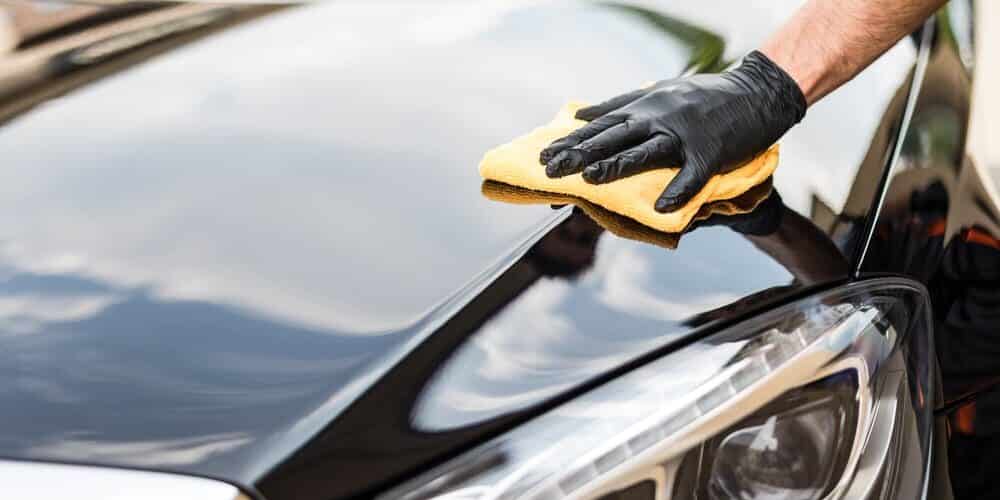
There are several different types of car wax available, each intended for a certain surface, finish, and application. Here are some commonly used types of car wax:
Natural car wax
This kind of car wax is manufactured with natural components like carnauba wax or beeswax. It has a glossy finish and is well-known for its durability.
Synthetic car wax
This type of vehicle wax is composed of synthetic components such as polymers and silicones. It is renowned for having water-repellent qualities and long-lasting protection.
Spray-on car wax
This kind of auto wax dries quickly and is simple to apply. This product is perfect for quick touch-ups in between washes and leaves a gorgeous, glossy finish.
Liquid car wax
This kind of car wax offers a high-gloss finish and is simple to apply. It works great on broad surfaces.
Paste car wax
This type of car wax produces a long-lasting sheen. It’s perfect for restoring the shine of badly oxidized paint finishes.
Types Of Car Polish

Similar to car wax, there are many types of car polish, each carefully crafted for a certain surface, finish, and use. Here are some types of car polish:
Abrasive car polish
This type of car polish has abrasive particles that erase minor scratches and imperfections from the paint surface. It is perfect for repairing damaged or uneven paint jobs.
Non-abrasive car polish
This type of car polish is gentle on the paint surface and is best suited for use on newer vehicles with few apparent defects. It improves the paint’s brightness and gives a smooth finish.
All-in-one car polish
The combination of abrasive and non-abrasive particles in this type of car polish makes it perfect for use on a variety of paint finishes. It can smooth out little flaws and leave a shiny, flawless surface.
Spray-on car polish
This kind of car polish dries rapidly and is simple to apply. It offers a glossy, smooth finish, making it perfect for touch-ups in between washes.
Ceramic car polish
This type of car polish has ceramic particles in it which cover the paint surface in a long-lasting, water-resistant coating. It improves the paint’s sheen and offers durable protection.
When to Use Car Wax vs. Car Polish?
Knowing when to use car wax and polish is important for maintaining your vehicle’s appearance. This information will also enable you to use the products according to your car’s needs and specifications. Here are some guidelines about when to use each product:
When to use car wax?
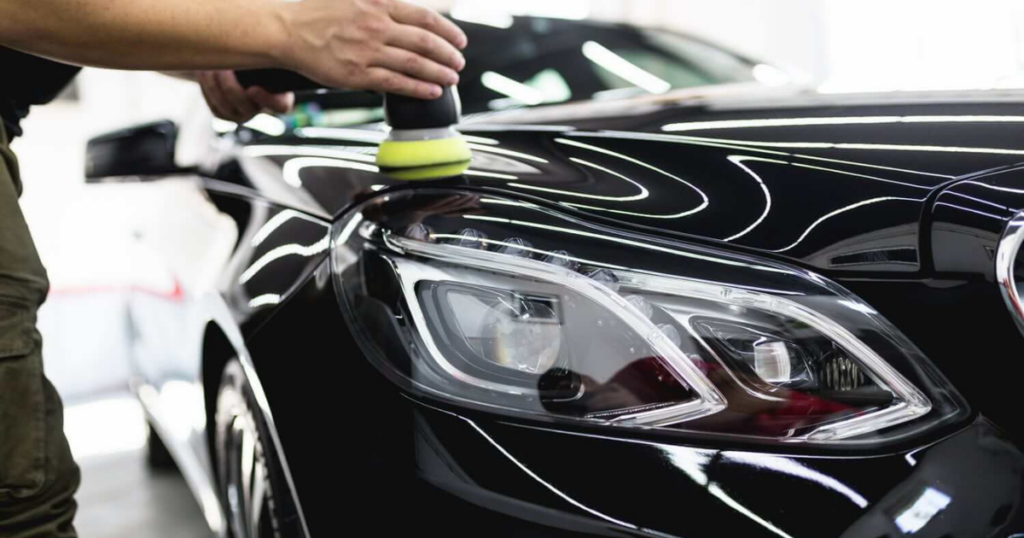
- After a car wash
After washing the car, apply car wax to remove any dirt or debris since it works best on a clean surface. - Before a long journey
Applying car wax in advance of a long road trip will help protect the paint against damage brought on by UV rays, bird droppings, and other environmental pollutants. - During the winter
Wintertime brings harsher weather and more exposure to environmental harm to cars, thus car wax can be very helpful. - When paint appears drab or faded
Using car wax can help bring back the luster and vibrancy of your car’s paint if it’s starting to appear faded or dull. - Every few months
Generally speaking, it’s a good idea to apply the car wax every few months to maintain the paint’s protective layer and preserve its best appearance.
When to use car polish?
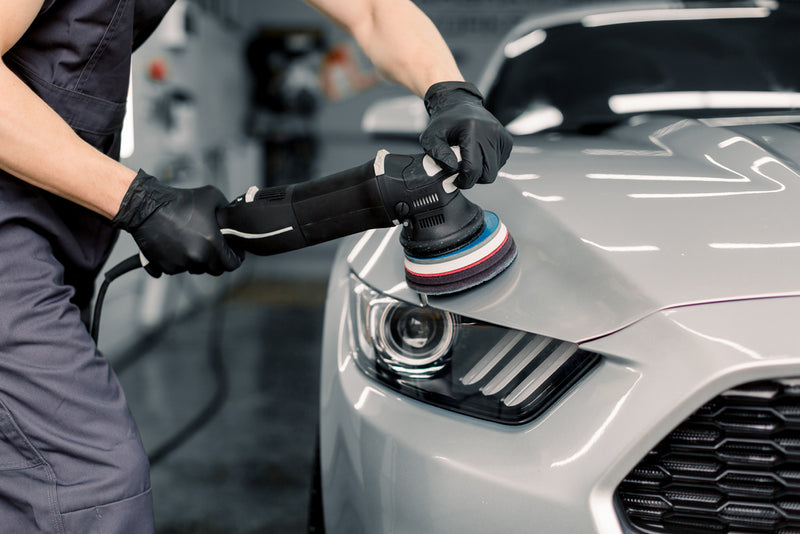
- When the paint has scratches
If your car’s paint is scratched, applying car polish can help remove it and repair the surface. - Before using vehicle wax
Use vehicle polish before applying car wax to ensure that the paint is as smooth and even as possible, enabling the wax to stick correctly. - When the paint appears faded or dull
Car polish can help bring back the luster and vibrancy of your car’s paint if it appears faded or dull. - Twice a year, or once
Car polish should not be used more than once or twice a year unless the paint is severely damaged or worn.
Benefits of Using Car Wax and Polish

Car polish and wax are essential for keeping the car looking good and shielding the paint from environmental damage. Both products have numerous uses and are available in various combinations. Before purchasing any of these products, you need to understand their benefits.
Here are some benefits of applying car shine and wax:
- They create a barrier on top of the paint to shield it from UV rays, bird droppings, and other environmental toxins.
- They contribute to the paint’s sheen, giving it a glossy, polished appearance.
- They contribute to increased water resistance by preventing water from adhering to the car’s surface and possibly causing rust and damage.
- The polished surface of the car is less likely to attract dirt and debris, making cleaning it easier.
- They give long-lasting paint protection and keep your car looking great for months at a time.
- They give the paint’s surface a smooth, uniform finish by removing minor scratches and swirl marks.
Disadvantages of Using Car Wax and Polish

Although car wax and polish can improve a car’s appearance magically and instantaneously, there are some disadvantages to take into account before using them. The following are some possible disadvantages of using car polish and wax:
- Wax usually needs to be reapplied frequently to keep its shine because its typical shelf life is one to three months.
- It can take a while to apply the car wax, especially if you want it to be shiny. It takes time and accuracy to get the wax to the ideal sheen.
- Car wax can leave a residue on the surface of the vehicle if it is not applied correctly, and this residue can be challenging to remove.
- Car wax attracts dust and debris, so you may need to clean your vehicle more frequently.
- Some car polishes contain abrasive substances that, when applied incorrectly, might damage the vehicle’s paint.
Methods of Application
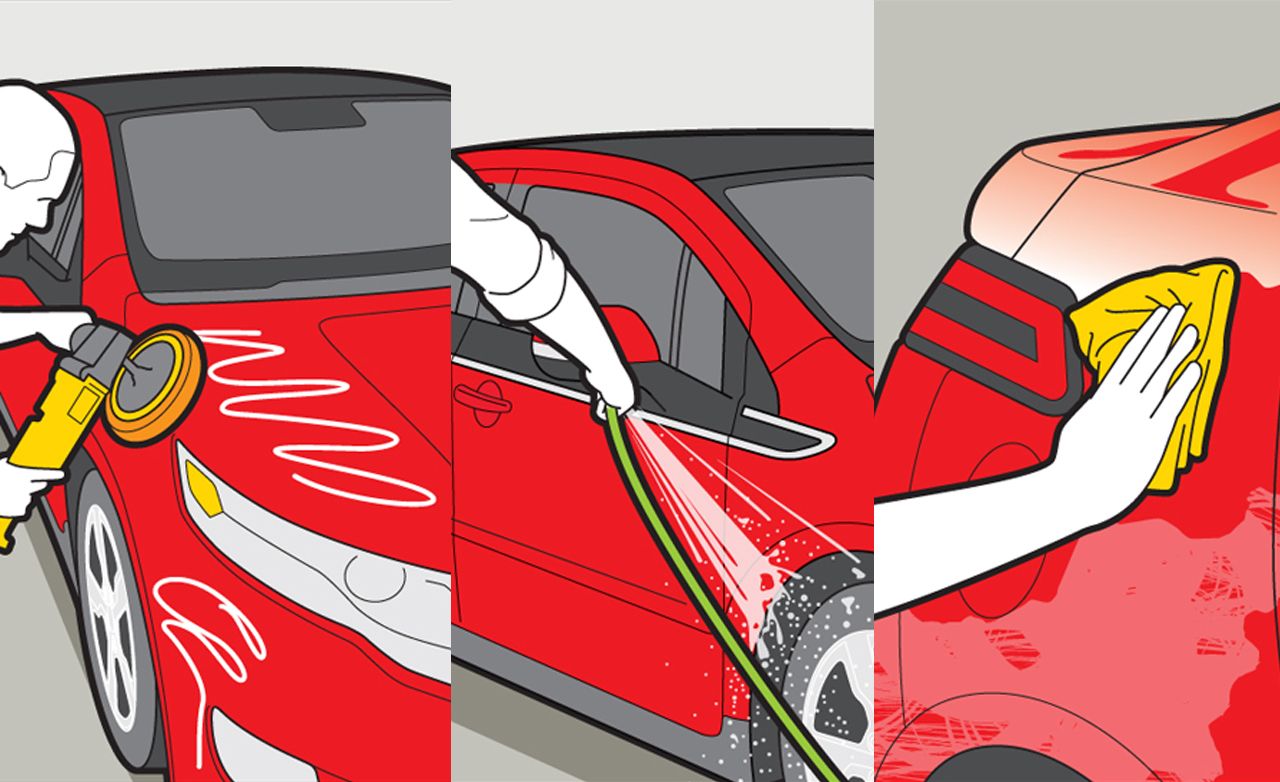
Car wax and polish can be applied in a variety of ways, depending on the product, target regions, and personal preferences. Here are a few different ways to apply car polish and wax:
- Manual application: This method involves hand-applying the product using a soft cloth or foam applicator pad, working in small parts at a time.
- Use of foam pads: Here, the substance is applied swiftly and uniformly using a foam pad that is attached to a power drill or polisher.
- Using a spray bottle: You can also use a spray bottle to evenly distribute the substance across the surface of the car.
- Machine application: This technique involves applying the product uniformly across the car’s surface using equipment, such as a buffer or polisher.
It’s important to adhere to the directions on the product label and work in small areas to ensure even coverage while applying the car wax or polish. It is also essential to use clean applicator pads or cloths to avoid damaging the car’s finish. It is advised to apply auto polish or wax in a shady place rather than on a hot surface or in the direct sun.
Steps for Waxing and Polishing Your Car

If you are wondering how to polish or wax your car, these are the steps you need to follow:
- First, give your vehicle a wash using water and car shampoo. Make sure to properly dry the car with a soft dry cloth to avoid leaving wet spots. Always clean, wax, or polish your car in the shade or during a cool weather.
- After washing your car, it’s time to polish it. Apply the polish to your car using a suitable pad, following the product’s directions. Always apply the polish in a circular motion, panel by panel. Although utilizing a machine will save time and effort, you can still polish your car by hand.
- Polish the surface till the polishing substance vanishes, leaving only the shiny paint. After that, you can proceed to polish the following area.
- It’s recommended to wax the vehicle after polishing to preserve the finish and add some extra shine.
- You can begin waxing your car after washing and drying it. Apply wax to your vehicle in a circular motion using the pad or sponge that came with it.
- Apply wax to the entire car, one area at a time. Unlike polish, you must allow the wax to dry before wiping it off. After drying, use a fresh microfiber towel to wipe it off. Now, your car will be gleaming brilliantly for months to come.
FAQs
Which is better for cars: waxing or polishing?
Waxing and polishing are both beneficial. While polishing removes defects and increases shine, waxing offers protection from the weather. Thus, for optimal effects, it is advised to perform both.
Is wax the same as polish?
No, car polish and wax are not the same thing. While car polish serves to improve the shine and vanish small imperfections like swirls and scratches, car wax offers a protective layer on the vehicle’s surface.
Conclusion
There’s nothing better for car enthusiasts than seeing cars lined up and shining in the sun. Waxing and polishing your car are essential parts of the car maintenance process. Regularly waxing or polishing your car will keep the paint appearing brilliant and new, allowing it to last for years.




